RCAF History: Pilot Officer. Andrew C. Mynarski, VC
Pilot Officer. Andrew C. Mynarski, VC

(DND Archives Photo, PL-38261,and IWM Photo, CHP 975)
Pilot Officer Andrew C. Mynarski, VC.
P/O“Andy” Mynarski, VC, was born in Winnipeg, Manitoba and joined the RCAF in 1941. P/O Mynarski was the mid-upper gunner of a Lancaster aircraft detailed to participate in a raid on the Cambrai railway yards in France on the night of 12-13 June 1944. “Shortly after crossing the French coast, Lancaster VR-A, No. KB726 of the Royal Canadian Air Force 419 “Moose" Squadron” was briefly coned by enemy searchlights. After some evasive manoeuvres, they were in the safety of darkness again.They began descending to the level of their planned attack when a German Junkers Ju 88 night-fighter came in from astern. Its cannons blazed from below. Three explosions tore the aircraft. Both port engines were knocked out and began to flame. Hydraulic lines to the rear turret were severed and the fluid ignited, turning the rear of the fuselage into an inferno. The captain, Art de Bryne gave the order to bail out.
P/O Mynarski made a heroic effort to extricate the rear gunner P/O George (Pat) Brophy, from the turret of his burning Lancaster, even though his own parachute and clothing were on fire. Ironically, Mynarski, who was able to bail out, died in the action while the trapped gunner incredibly survived to tell the tale. The citation for his VC reads:
“Pilot Officer Mynarski was the mid-upper gunner of a Lancaster aircraft, detailed to attack a target at Cambraiin France, on the night of 12th June 1944. The aircraft was attacked from below and astern by an enemy fighter and ultimately came down in flames. As an immediate result of the attack, both port engines failed. Fire broke out between the mid-upper turret and the rear turret, as well as in the port wing. The flames soon became fierce, and the captain ordered the crew to abandon the aircraft.
Pilot Officer Mynarski left his turret and went toward the escapehatch. He then saw that the rear gunnerwas still in his turret and apparently unable to leave it. The turret was, in fact, immovable, since the hydraulic gear had been put out of action when the port engines failed, and the manual gear had been broken by the gunner in his attempts to escape.
Without hesitation, Pilot Officer Mynarski made his way through the flames in an endeavour to reach the rear turret and release the gunner. Whilst so doing, his parachute and his clothing, up to the waist, were set on fire. All his efforts to move the turret and free the gunner were in vain. Eventually the rear gunner clearly indicated to him that there was nothing more he could do and that he should try to save his own life. Pilot Officer Mynarski reluctantly went back through the flames to the escape hatch. There, as a last gesture to the trapped gunner, he turned toward him, stood to attention in his flaming clothing and saluted before he jumped out of the aircraft. Pilot Officer Mynarski ‘s descent was seen by French people on the ground. Both his parachute and his clothing were on fire. He was found eventually by the French but was so severely burned that he died from his injuries.
The rear gunner had a miraculous escape when the aircraft crashed. He subsequently testified that, had Pilot Officer Mynarski not attempted to save his comrade’s life, he could have left the aircraft in safety and would, doubtless, have escaped death. Pilot Officer Mynarski must have been fully aware that in trying to free the rear gunner he was almost certain to lose his own life. Despite this, with outstanding courage and complete disregard for his own safety, he went to the rescue. Willingly accepting the danger, Pilot Officer Mynarski lost his life by a most conspicuous act of heroism which called for valour of the highest order.”
Andy Mynarski’s VC is on display at Air Command Headquarters in Winnipeg, Manitoba; in addition to an aluminum side panel from his Lancaster (Serial No. KB726) VR-A, complete with holes from the cannon shells fired by the German Ju 88 that shot the aircraft down. Also displayed here is a Browning .303 machine gun from P/O George (Pat) Brophy’s rear turret, and many other major historical artefacts. (RCAF)
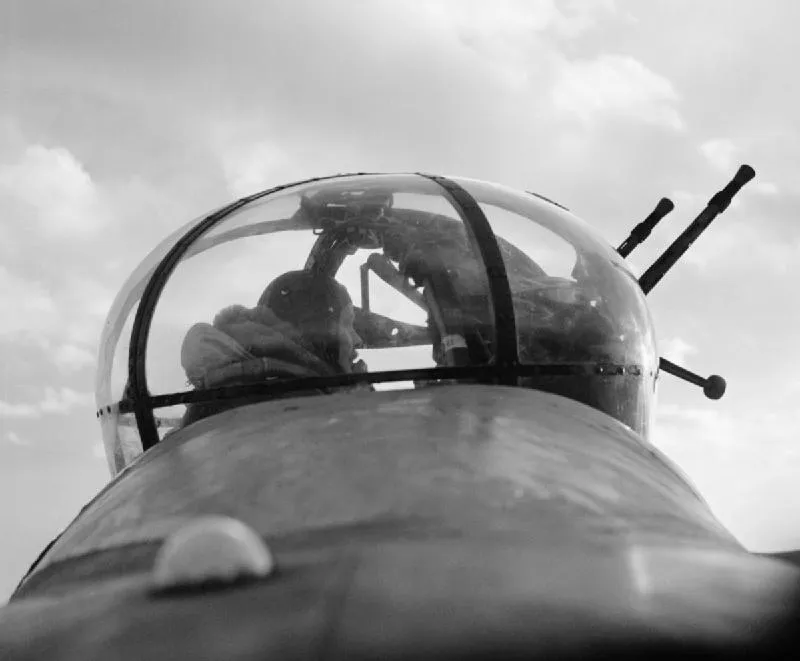
(IWM Photo, CH 8795)
A No 57 Squadron mid-upper gunner, Sergeant 'Dusty' Miller, 'scans the sky for enemy aircraft' from a Lancaster's Fraser Nash FN50 turret. The mid-upper turret was a standard feature on most Lancaster marks and initially used the FN50, armed with two .303-in Browning machine guns.
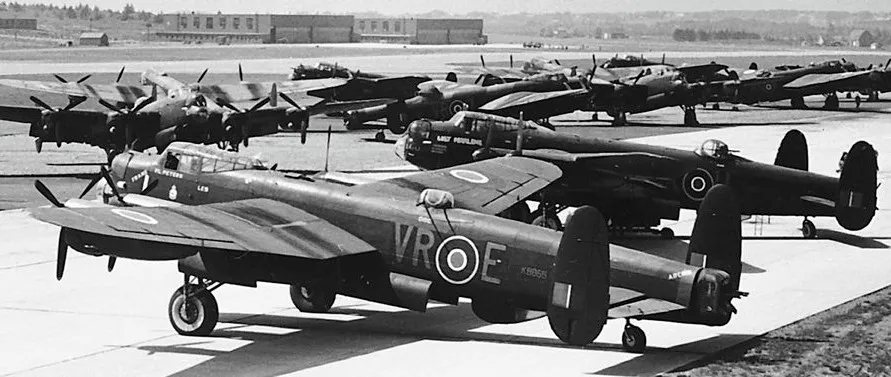
(RCAF Photo via the Bomber Command Museum)
All Lancaster bombers carried front, mid-upper, and rear gun-turrets except for a few special operations such as the Dams Raid and when carrying the Grand Slam bombs. Mid-upper turrets were mounted on top of the aircraft, about mid-way down the fuselage. This photo of No. 419 Squadron RCAF Lancasters illustrates the two mid-upper turret types. 'VR-E' has a Martin turret whereas the aircraft beyond has a Frazer-Nash turret. Note that the Martin turret, because of its greater weight, is placed much closer to the wing than the Frazer-Nash. (Bomber Command Museum)
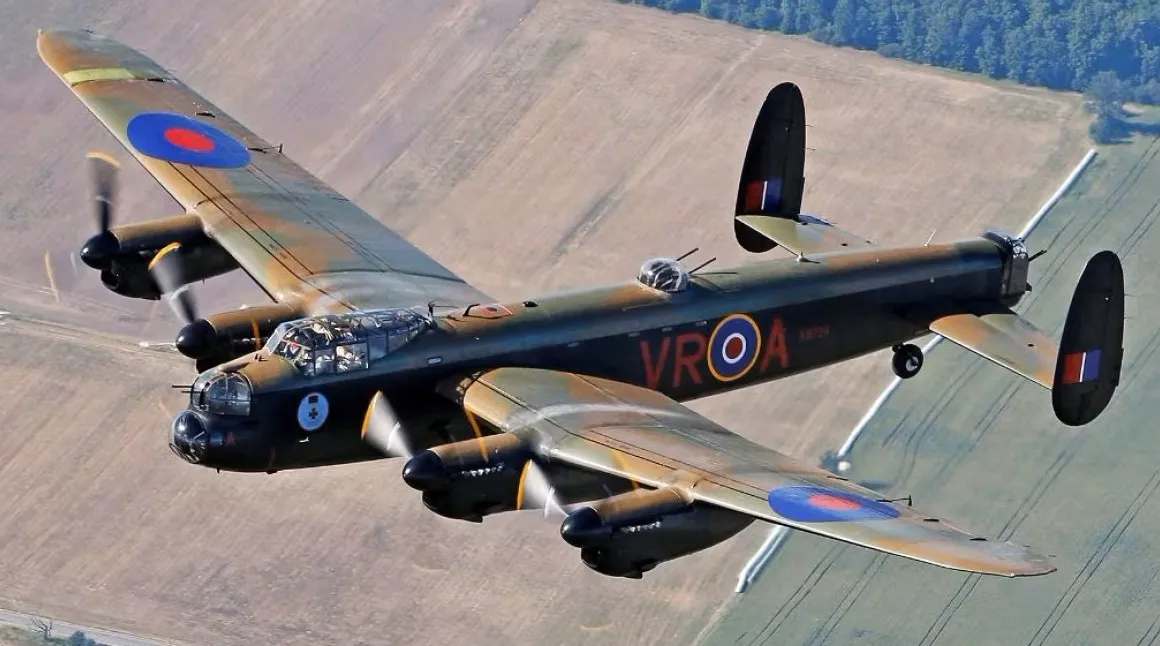
(Doug Fisher Photo, Canadian Warplane Heritage Museum)
The Mynarski Memorial Lancaster, owned and operated by the Canadian Warplane Heritage Museum in Hamilton, was originally built at Victory Aircraft in Malton, Ont., in 1945. It is painted as (Serial No. KB726), coded VR-A.
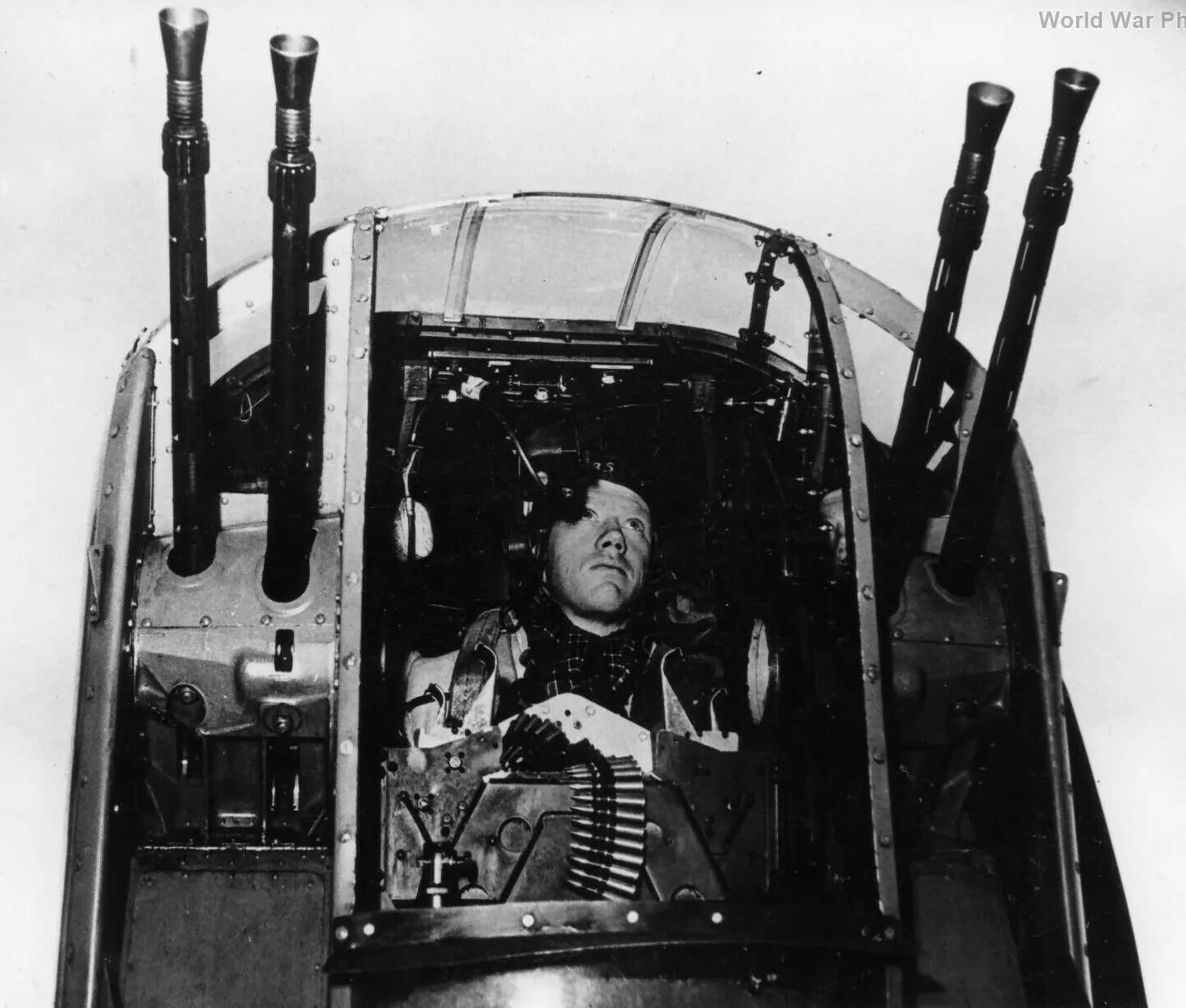
(RAF Photo)
Lancaster FN20 Tail Turret. The early FN20 tail turret featured four .303-in Browning machine guns, initially fed by 500-round ammunition boxes.

(Luftwaffe Photo)
German Luftwaffe Junkers Ju 88G-6 fitted with liquid-cooled Jumo 213 engines, Lichtenstein SN-2 radar, and two Schräge Musik MG 151/20 cannon installed in the aft fuselage, c1944. In 1944 a third of all German nightfighters carried upward-firing guns.
One of the most effective German nightfighters was the Ju 88. It was important to attack undetected, and therefore tracers were not used. Special ammunition with a faint glowing trail replaced them. The guns were given flash reducers. An additional gunsight was installed in the cockpit to aim the guns. The attack from below had the advantage that the nightfighter crew could observe and identify the silhouette of the aircraft before they attacked. At the same time the bomber crew could not see the nightfighter against the dark ground, nor defend itself: The belly turrets of British bombers had been removed because of their limited effectiveness. The nightfighter usually aimed for the fuel tanks, not for the fuselage, because of the risk that exploding bombs would damage the attacker. Schräge Musik soon produced devastating results. It was at its most successful in the winter of 1943-1944. This was a time when losses became unacceptable: The RAF lost 78 of 823 the bombers that attacked Leipzig on 19 February, and 107 of the 795 bombers that attacked Berlin on 30 March. (RCAF Heritage and History)
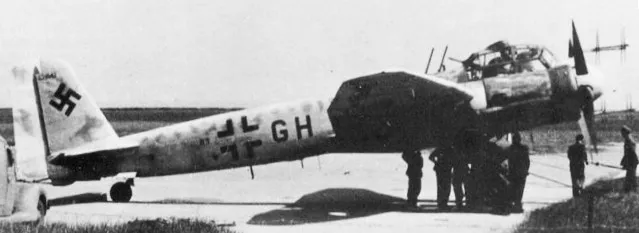
(Luftwaffe Photo)
Junkers Ju 88 with two Schräge Musik MG 151/20 upward firing cannon mounted behind the cockpit.





